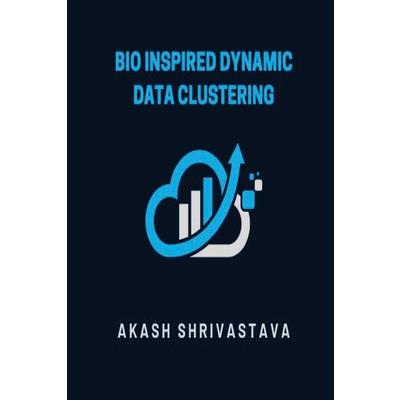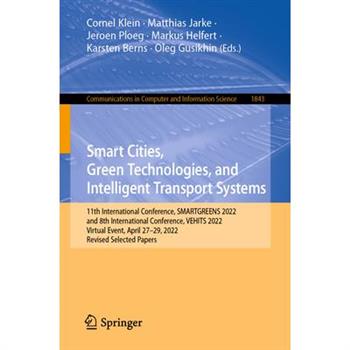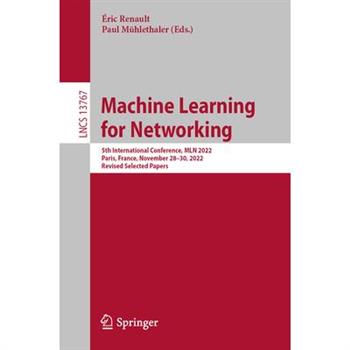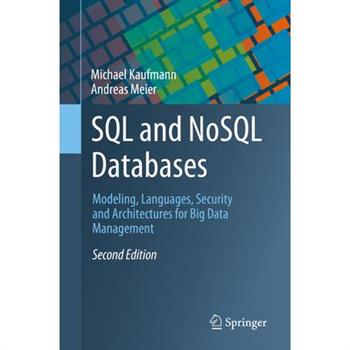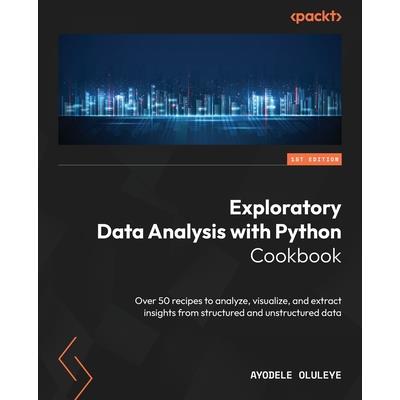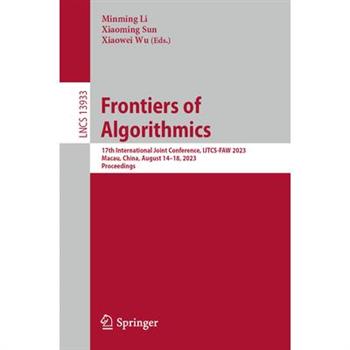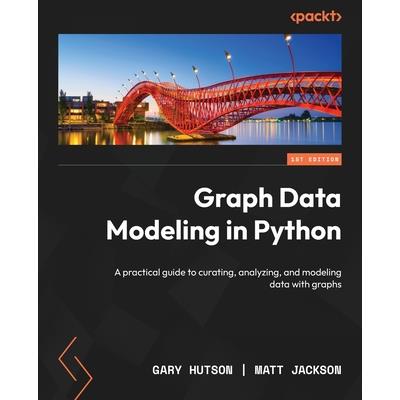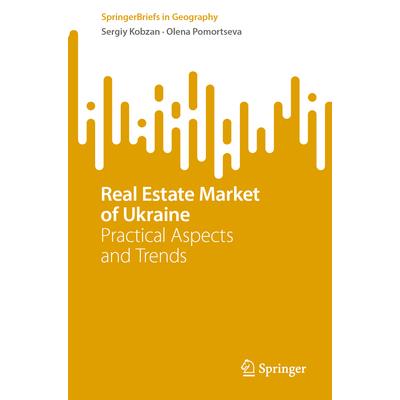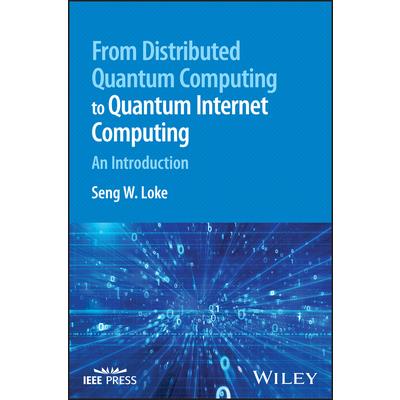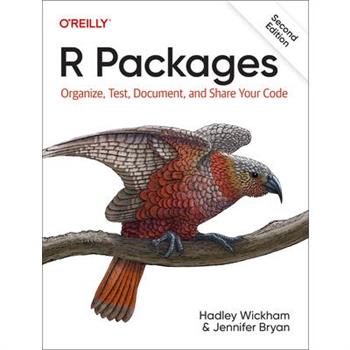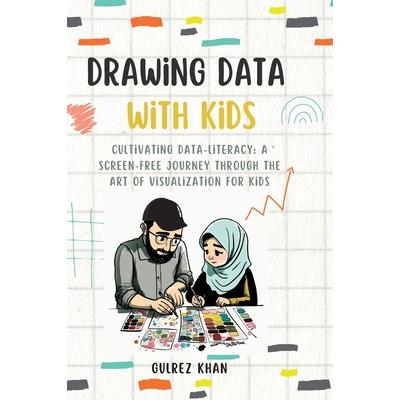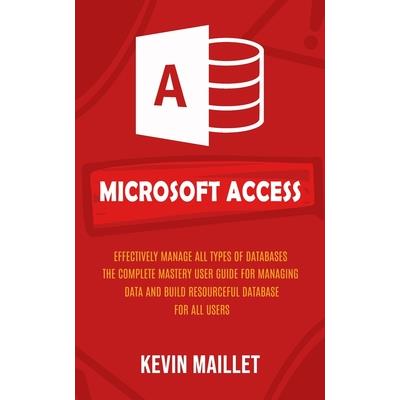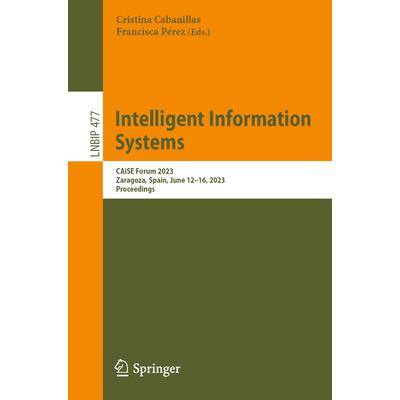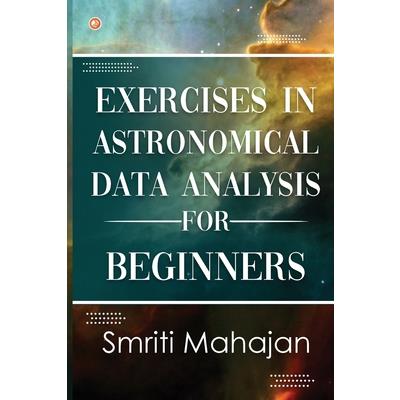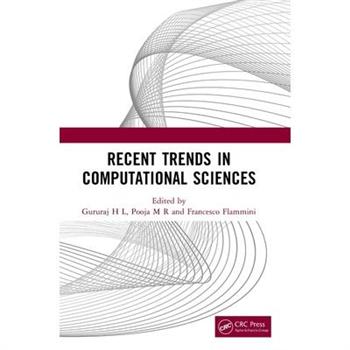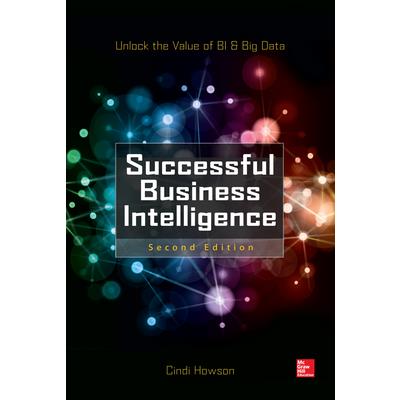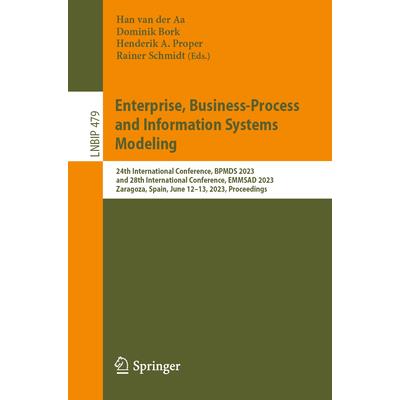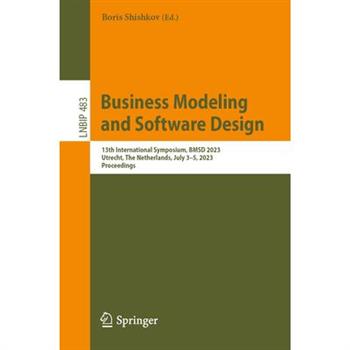Bio Inspired Dynamic Data Clustering
In the era, where an enormous amount of data is getting generated from various resources in different formats, it is highly required to categorize this data in proper format to process useful knowledge which could be utilized effectively. Clustering technique is one of the effective and popular techniques to segregate data by abstracting underlying structure of the data. This approach is used to organize the data either to form a group of individuals or categorize as a hierarchy of groups. Clustering becomes an important technique to analyze large amounts of data which is frequently applied in various domains of engineering, science and other well-known areas such as biology, marketing, psychology, medicine, remote sensing, computer vision etc. The representation of data that has been done in clustering analysis is then undergone the observation. It is done to articulate and justify the grouping of data. The investigation is carried out to see whether the phenomenon of clustering is fitting into the preconceived ideas and experiments. Data mining is the domain where data is being retrieved, processed and transformed into information. In data mining, clustering is one of the most frequently used forms of exploratory data analysis which belongs to unsupervised classification of patterns into groups .Clustering works as to divide data into groups on the basis of similarity and dissimilarity . It is the collection of those data sets and entities which lies in these groups pertaining to similar and different properties.In most of the cases, clusters are formed by exploring their internal homogeneous properties and external separation of dataset. In prescribed clusters, patterns are found to be similar in the same groups and different in different groups . Data analysis belongs to many computing applications; it is considered to be involved in the design phase or as a part of their online functions. Data analysis procedures can be categorized as either exploratory or confirmatory, based on the models which are appropriate for the source of the data, but a key element in both types of processes is considered to be grouping, or classification of measurements.
Business Intelligence
This book constitutes the refereed proceedings of the 8th International Conference on Business Intelligence, CBI 2023, which held in Istanbul, Turkey, during July 19-21, 2023.The 15 full papers included in this book were carefully reviewed and selected from 50 submissions. They were organized in topical sections as follows: artificial intelligence and business intelligence; and optimization and decision support.
Drawing Data with Kids
Drawing Data with Kids is the perfect companion for a summer full of creativity, learning, and fun. Join Pariza and her dad on a captivating adventure that combines the world of art with the fascinating realm of data visualization.In this interactive book, children aged 7-14 will embark on a screen-free journey, discovering the magic of data through hands-on drawing exercises. Here's what makes Drawing Data with Kids a must-have for parents and teachers: Engaging Storytelling: Follow Pariza's journey as she explores different types of graphs, charts, and visualizations, bringing data to life through captivating illustrations and relatable narratives.Artistic Exploration: Encourage your child's creativity as they apply data concepts to their own drawings, turning abstract numbers and figures into vibrant visual representations.Critical Thinking Skills: Foster your child's analytical thinking and problem-solving abilities as they make sense of data, analyze information, and draw meaningful conclusions.Data Literacy Made Fun: From bar graphs to pie charts, scatter plots to line graphs, each chapter introduces a new concept in an engaging and easy-to-understand way, empowering kids to understand and communicate data effectively.Screen-Free Summer: Provide a break from screens and technology while keeping your child engaged with interactive activities that stimulate their imagination and learning.Whether you're a parent, teacher, or caregiver, Drawing Data with Kids is a valuable resource that combines art, creativity, and data literacy to empower children with essential skills for the digital age.Make this summer a memorable one by immersing your child in the colorful world of data through the power of drawing. Grab your copy of Drawing Data with Kids today and embark on a summer adventure that sparks curiosity, creativity, and a love for learning!
Database Performance at Scale
Discover critical considerations and best practices for improving database performance based on what has worked, and failed, across thousands of teams and use cases in the field. This open access book provides practical guidance for understanding the database-related opportunities, trade-offs, and traps you might encounter while trying to optimize data-intensive applications for high throughput and low latency. Whether you are building a new system from the ground up or trying to optimize an existing use case for increased demand, this book covers the essentials.The book begins with a look at the many factors impacting database performance at the extreme scale that today's game changing applications face--or at least hope to achieve. You'll gain insight into the performance impact of both technical and business requirements, and how those should influence your decisions around database infrastructure and topology. The authors share an inside perspective on often-overlooked engineering details that could be constraining--or helping--your team's database performance. The book also covers benchmarking and monitoring practices by which to measure and validate the outcomes from the decisions that you make.The ultimate goal of the book is to help you discover new ways to optimize database performance for your team's specific use cases, requirements, and expectations.What You Will LearnUnderstand often overlooked factors that impact database performance at scaleRecognize data-related performance and scalability challenges associated with your project Select a database architecture that's suited to your workloads, use cases, and requirementsAvoid common mistakes that could impede your long-term agility and growthJumpstart teamwide adoption of best practices for optimizing database performance at scaleWho ThisBook Is ForIndividuals and teams looking to optimize distributed database performance for an existing project or to begin a new performance-sensitive project with a solid and scalable foundation. This will likely include software architects, database architects, and senior software engineers who are either experiencing or anticipating pain related to database latency and/or throughput.
Reproducible Research in Pattern Recognition
This book constitutes the thoroughly refereed post-workshop proceedings of the 4th International Workshop on Reproducible Research in Pattern Recognition, RRPR 2022, held in Montreal, Canada, in August 2022. The 5 revised full papers presented together with 4 short papers, were carefully reviewed and selected from 9 submissions. The papers were organized into three main categories
Smart Cities, Green Technologies, and Intelligent Transport Systems
This book constitutes the refereed post-conference proceedings of the 11th International Conference on Smart Cities and Green ICT Systems and 8th International Conference on Vehicle Technology and Intelligent Transport Systems, SMARTGREENS 2022 and VEHITS 2022 was held Virtually on April 27-29, 2022.The 7 full papers included in this book were carefully reviewed and selected from 80 submissions. They were organized in topical sections as follows: ​smart cities and green ICT systems and vehicle technology and intelligent transport systems.
Innovative Intelligent Industrial Production and Logistics
This volume includes extended and revised versions of a set of selected papers from the First International Conference on Innovative Intelligent Industrial Production and Logistics, IN4PL 2020, held as virtual event in November 4-6, 2020 and Second International Conference on Innovative Intelligent Industrial Production and Logistics, IN4PL 2021, held as virtual event in October 25-27, 2021.The 9 full papers included in this book were carefully reviewed and selected from 44 submissions. They were organized in topical sections as follows: ​on kernel search based gaussian process anomaly detection; general architecture framework and general modelling framework.
Machine Learning for Networking
This book constitutes the post-conference proceedings of the 5th International Conference on Machine Learning for Networking, MLN 2022, held in Paris, France, November 28-30, 2022. The 12 full papers presented in this book were carefully reviewed and selected from 27 submissions. The papers present novel ideas, results, experiences and work-in-process on all aspects of Machine Learning and Networking.
Conflict-Free Coloring for Intervals
A conflict-free k-coloring of a graph involves giving some of the vertices one of k different colours so that for each vertex v and each of v's neighbours, there is a colour that is given to exactly one vertex. Such colorings are extensively researched in graph theory and have applications in wireless networking, robotics, and geometry. Here, we look at the naturally occurring issue of the least k for which conflict-free k-colorings exist, the conflict-free chromatic number CF(G). We present outcomes for both closed neighbourhoods N[v], where a vertex v belongs to its neighbourhood, and open neighbourhoods N(v), where a vertex v does not belong to its neighbourhood.Vertex-set V and edge-set E are both present in a hypergraph H. In a hypergraph, an edge may have more vertices than two, whereas in a graph, an edge can only contain a maximum of two vertices. Each vertex of a V is given a different colour when it is coloured.If each edge has at least one vertex with a distinct colour, the colouring is conflict-free. The two vertices next to each edge should have a distinct colour if H is a graph, which makes this requirement the norm for a valid colouring of a graph.Conflict-free colorings are necessary for RFID protocols, cellular antenna frequency band assignment, and sensor network battery consumption issues.
Subject-Oriented Business Process Management. Models for Designing Digital Transformations
This book constitutes the refereed proceedings of the 14th International Conference on Subject-Oriented Business Process Management, S-BPM ONE 2023, held in Rostock, Germany, during May 31-June 1, 2023.The 10 full papers and 9 short papers included in this book were carefully reviewed and selected from 24 submissions. They were organized in topical sections as follows: management issues and people; development and requirements; modeling, technology and infrastructure.
Pro T-SQL 2022
Learn how to write and design simple and efficient T-SQL code. This is a hands-on book that teaches you how to write better T-SQL with examples and straightforward explanations. New in this edition is coverage of Parameter Sensitive Plan (PSP) optimization, Azure Synapse Link for real-time analytics, integration with S3-compatible object storage, and SQL Ledger tables based on blockchain. You'll learn to improve your T-SQL design in ways that provide faster performance, stronger security, and easier comprehension. The book identifies common anti-patterns in writing T-SQL and instructs you on how to change your code so you can be more confident in writing T-SQL code that is reliable and performs well.Pro T-SQL 2022 is focused on the problems that developers are faced with and must solve in delivering successful applications. The content begins from a foundation of writing T-SQL that is clear and understandable. The book then takes youthrough writing SQL that performs well, is easy to manage through coding standards and version control, can be maintained and modified as business requirements change over time, scales as your business grows, and takes advantage of the full range of security features built into the SQL Server and Azure SQL database engines. What You Will LearnChoose the correct data types and database objects when designing your T-SQLWrite T-SQL that accesses your data efficiently and uses hardware effectivelyImplement source control and testing methods to streamline your deployment process.Design T-SQL that is flexible and can be enhanced or modified with little effortPlan for long-term data management, including growth and purging of older dataEnhance database security through features such as encryption, data masking, row-level security, and the SQL Ledger blockchain table type Who This Book Is ForDatabase developers who want to improve the efficiency of their applications with better T-SQL; developers who want to know more about T-SQL so they can be prepared to solve complex problems more easily; data professionals who want to write high-quality T-SQL that performs well, is flexible to changing needs, and is easy for others to understand
Exploratory Data Analysis with Python Cookbook
Extract valuable insights from data by leveraging various analysis and visualization techniques with this comprehensive guide Purchase of the print or Kindle book includes a free PDF eBookKey Features: - Gain practical experience in conducting EDA on a single variable of interest in Python- Learn the different techniques for analyzing and exploring tabular, time series, and textual data in Python- Get well versed in data visualization using leading Python libraries like Matplotlib and seabornBook Description: In today's data-centric world, the ability to extract meaningful insights from vast amounts of data has become a valuable skill across industries. Exploratory Data Analysis (EDA) lies at the heart of this process, enabling us to comprehend, visualize, and derive valuable insights from various forms of data.This book is a comprehensive guide to Exploratory Data Analysis using the Python programming language. It provides practical steps needed to effectively explore, analyze, and visualize structured and unstructured data. It offers hands-on guidance and code for concepts such as generating summary statistics, analyzing single and multiple variables, visualizing data, analyzing text data, handling outliers, handling missing values and automating the EDA process. It is suited for data scientists, data analysts, researchers or curious learners looking to gain essential knowledge and practical steps for analyzing vast amounts of data to uncover insights.Python is an open-source general purpose programming language which is used widely for data science and data analysis given its simplicity and versatility. It offers several libraries which can be used to clean, analyze, and visualize data. In this book, we will explore popular Python libraries such as Pandas, Matplotlib, and Seaborn and provide workable code for analyzing data in Python using these libraries.By the end of this book, you will have gained comprehensive knowledge about EDA and mastered the powerful set of EDA techniques and tools required for analyzing both structured and unstructured data to derive valuable insights.What You Will Learn: - Perform EDA with leading python data visualization libraries- Execute univariate, bivariate and multivariate analysis on tabular data- Uncover patterns and relationships within time series data- Identify hidden patterns within textual data- Learn different techniques to prepare data for analysis- Overcome challenge of outliers and missing values during data analysis- Leverage automated EDA for fast and efficient analysisWho this book is for: Whether you are a data analyst, data scientist, researcher or a curious learner looking to analyze structured and unstructured data, this book will appeal to you. It aims to empower you with essential knowledge and practical skills for analyzing and visualizing data to uncover insights.It covers several EDA concepts and provides hands-on instructions on how these can be applied using various Python libraries. Familiarity with basic statistical concepts and foundational knowledge of python programming will help you understand the content better and maximize your learning experience.Table of Contents- Generating Summary Statistics- Preparing Data for EDA- Visualising Data in Python- Performing Univariate Analysis in Python- Performing Bivariate analysis in Python- Performing Multivariate analysis in Python- Analysing Time Series data- Analysing Text data- Dealing with Outliers and Missing values- Performing Automated EDA in Python
Driving Data Quality with Data Contracts
Everything you need to know to apply data contracts and build a truly data-driven organization that harnesses quality data to deliver tangible business valuePurchase of the print or Kindle book includes a free PDF eBook.Key Features: Understand data contracts and their power to resolving the problems in contemporary data platformsLearn how to design and implement a cutting-edge data platform powered by data contractsAccess practical guidance from the pioneer of data contracts to get expert insights on effective utilizationBook Description: Despite the passage of time and the evolution of technology and architecture, the challenges we face in building data platforms persist. Our data often remains unreliable, lacks trust, and fails to deliver the promised value.With Driving Data Quality with Data Contracts, you'll discover the potential of data contracts to transform how you build your data platforms, finally overcoming these enduring problems. You'll learn how establishing contracts as the interface allows you to explicitly assign responsibility and accountability of the data to those who know it best-the data generators-and give them the autonomy to generate and manage data as required. The book will show you how data contracts ensure that consumers get quality data with clearly defined expectations, enabling them to build on that data with confidence to deliver valuable analytics, performant ML models, and trusted data-driven products.By the end of this book, you'll have gained a comprehensive understanding of how data contracts can revolutionize your organization's data culture and provide a competitive advantage by unlocking the real value within your data.What You Will Learn: Gain insights into the intricacies and shortcomings of today's data architecturesUnderstand exactly how data contracts can solve prevalent data challengesDrive a fundamental transformation of your data culture by implementing data contractsDiscover what goes into a data contract and why it's importantDesign a modern data architecture that leverages the power of data contractsExplore sample implementations to get practical knowledge of using data contractsEmbrace best practices for the successful deployment of data contractsWho this book is for: If you're a data engineer, data leader, architect, or practitioner thinking about your data architecture and looking to design one that enables your organization to get the most value from your data, this book is for you. Additionally, staff engineers, product managers, and software engineering leaders and executives will also find valuable insights.
Geospatial Data Analytics on AWS
Build an end-to-end geospatial data lake in AWS using popular AWS services such as RDS, Redshift, DynamoDB, and Athena to manage geodata Purchase of the print or Kindle book includes a free PDF eBook.Key Features: Explore the architecture and different use cases to build and manage geospatial data lakes in AWSDiscover how to leverage AWS purpose-built databases to store and analyze geospatial dataLearn how to recognize which anti-patterns to avoid when managing geospatial data in the cloudBook Description: Managing geospatial data and building location-based applications in the cloud can be a daunting task. This comprehensive guide helps you overcome this challenge by presenting the concept of working with geospatial data in the cloud in an easy-to-understand way, along with teaching you how to design and build data lake architecture in AWS for geospatial data.You'll begin by exploring the use of AWS databases like Redshift and Aurora PostgreSQL for storing and analyzing geospatial data. Next, you'll leverage services such as DynamoDB and Athena, which offer powerful built-in geospatial functions for indexing and querying geospatial data. The book is filled with practical examples to illustrate the benefits of managing geospatial data in the cloud. As you advance, you'll discover how to analyze and visualize data using Python and R, and utilize QuickSight to share derived insights. The concluding chapters explore the integration of commonly used platforms like Open Data on AWS, OpenStreetMap, and ArcGIS with AWS to enable you to optimize efficiency and provide a supportive community for continuous learning.By the end of this book, you'll have the necessary tools and expertise to build and manage your own geospatial data lake on AWS, along with the knowledge needed to tackle geospatial data management challenges and make the most of AWS services.What You Will Learn: Discover how to optimize the cloud to store your geospatial dataExplore management strategies for your data repository using AWS Single Sign-On and IAMCreate effective SQL queries against your geospatial data using AthenaValidate postal addresses using Amazon Location servicesProcess structured and unstructured geospatial data efficiently using RUse Amazon SageMaker to enable machine learning features in your applicationExplore the free and subscription satellite imagery data available for use in your GISWho this book is for: If you understand the importance of accurate coordinates, but not necessarily the cloud, then this book is for you. This book is best suited for GIS developers, GIS analysts, data analysts, and data scientists looking to enhance their solutions with geospatial data for cloud-centric applications. A basic understanding of geographic concepts is suggested, but no experience with the cloud is necessary for understanding the concepts in this book.
Business Intelligence and Big Data
The twenty-first century is a time of intensifying competition and progressive digitization. Individual employees, managers, and entire organizations are under increasing pressure to succeed. The questions facing us today are: What does success mean? Is success a matter of chance and luck or perhaps is success a category that can be planned and properly supported?Business Intelligence and Big Data: Drivers of Organizational Success examines how the success of an organization largely depends on the ability to anticipate and quickly respond to challenges from the market, customers, and other stakeholders. Success is also associated with the potential to process and analyze a variety of information and the means to use modern information and communication technologies (ICTs). Success also requires creative behaviors and organizational cleverness from an organization.The book discusses business intelligence (BI) and Big Data (BD) issues in the context of modern management paradigms and organizational success. It presents a theoretically and empirically grounded investigation into BI and BD application in organizations and examines such issues as: Analysis and interpretation of the essence of BI and BD Decision support Potential areas of BI and BD utilization in organizations Factors determining success with using BI and BD The role of BI and BD in value creation for organizations Identifying barriers and constraints related to BI and BD design and implementation The book presents arguments and evidence confirming that BI and BD may be a trigger for making more effective decisions, improving business processes and business performance, and creating new business. The book proposes a comprehensive framework on how to design and use BI and BD to provide organizational success.
South African Institute of Computer Scientists and Information Technologists
This book contains a selection of the best papers of the 44th Annual Conference, SAICSIT 2023, held in Pretoria, South Africa, in July 2023.The 18 papers presented in this volume were carefully reviewed and selected from 54 regular submissions. They adress various aspects of the role of computer science in connectivity, information systems for connectivity, connecting society and emerging technologies for connectivity
Frontiers of Algorithmics
This book constitutes the refereed proceedings of the 17th International Joint Conference on Theoretical Computer Science-Frontier of Algorithmic Wisdom (IJTCS-FAW 2023), consisting of the 17th International Conference on Frontier of Algorithmic Wisdom (FAW) and the 4th International Joint Conference on Theoretical Computer Science (IJTCS), held in Macau, China, during August 14-18, 2023.FAW started as the Frontiers of Algorithmic Workshop in 2007 at Lanzhou, China, and was held annually from 2007 to 2021 and published archival proceedings. IJTCS, the International joint theoretical Computer Science Conference, started in 2020, aimed to bring in presentations covering active topics in selected tracks in theoretical computer science. To accommodate the diversified new research directions in theoretical computer science, FAW and IJTCS joined their forces together to organize an event for information exchange of new findings and work of enduring value in the field. The 21 full papers included in this book were carefully reviewed and selected from 34 submissions. They were organized in topical sections as follows: algorithmic game theory; algorithms and data structures; combinatorial optimization; and computational economics.
Leveling Up with SQL
Learn to write SQL queries to select and analyze data, and improve your ability to manipulate data. This book will help you take your existing skills to the next level. Author Mark Simon kicks things off with a quick review of basic SQL knowledge, followed by a demonstration of how efficient SQL databases are designed and how to extract just the right data from them. You'll then learn about each individual table's structure and how to work with the relationships between tables. As you progress through the book, you will learn more sophisticated techniques such as using common table expressions and subqueries, analyzing your data using aggregate and windowing functions, and how to save queries in the form of views and other methods. This book employs an accessible approach to work through a realistic sample, enabling you to learn concepts as they arise to improve parts of the database or to work with the data itself. After completing this book, you will have a more thorough understanding of database structure and how to use advanced techniques to extract, manage, and analyze data. What Will You Learn Gain a stronger understanding of database design principles, especially individual tablesUnderstand the relationships between tablesUtilize techniques such as views, subqueries, common table expressions, and windowing functions Who Is This Book For: SQL Databases users who want to improve their knowledge and techniques.
Graph Data Modeling in Python
Learn how to transform, store, evolve, refactor, model, and create graph projections using the Python programming languagePurchase of the print or Kindle book includes a free PDF eBookKey Features: Transform relational data models into graph data model while learning key applications along the wayDiscover common challenges in graph modeling and analysis, and learn how to overcome themPractice real-world use cases of community detection, knowledge graph, and recommendation networkBook Description: Graphs have become increasingly integral to powering the products and services we use in our daily lives, driving social media, online shopping recommendations, and even fraud detection. With this book, you'll see how a good graph data model can help enhance efficiency and unlock hidden insights through complex network analysis.Graph Data Modeling in Python will guide you through designing, implementing, and harnessing a variety of graph data models using the popular open source Python libraries NetworkX and igraph. Following practical use cases and examples, you'll find out how to design optimal graph models capable of supporting a wide range of queries and features. Moreover, you'll seamlessly transition from traditional relational databases and tabular data to the dynamic world of graph data structures that allow powerful, path-based analyses. As well as learning how to manage a persistent graph database using Neo4j, you'll also get to grips with adapting your network model to evolving data requirements.By the end of this book, you'll be able to transform tabular data into powerful graph data models. In essence, you'll build your knowledge from beginner to advanced-level practitioner in no time.What You Will Learn: Design graph data models and master schema design best practicesWork with the NetworkX and igraph frameworks in PythonStore, query, ingest, and refactor graph dataStore your graphs in memory with Neo4jBuild and work with projections and put them into practiceRefactor schemas and learn tactics for managing an evolved graph data modelWho this book is for: If you are a data analyst or database developer interested in learning graph databases and how to curate and extract data from them, this is the book for you. It is also beneficial for data scientists and Python developers looking to get started with graph data modeling. Although knowledge of Python is assumed, no prior experience in graph data modeling theory and techniques is required.
Real Estate Market of Ukraine
This book shows examples of basic approaches in real estate market analysis. Of value is the method of modeling the most attractive location of real estate, which is illustrated by a specific example. The authors give examples of real estate market research using GIS. The book analyzes the trends and prospects of real estate market development both in the pre-war and in the post-war period in Ukraine. It provides factors, trends, and development of the real estate market-directed investments. This book is useful to investors, real estate appraisers, real estate market researchers, GIS specialists, developers, researchers, graduate students, and students.
How to Make Things Faster
Slow systems are frustrating. They waste time and money. But making consistently great decisions about performance can be easy, if you understand what's going on. This book explains in a clear and thoughtful voice why systems perform the way they do. It's for anybody who's curious about how computer programs and other processes use their time and about what you can do to improve them. Through a mix of personal vignettes and technical use cases, Cary Millsap reviews the process of improving performance and provides best practices for optimizing systems efficiently. You'll learn how to identify the information needed to improve a system, how to find the root causes of performance issues, and how to fix them. You'll also learn how performance optimization is both a skill set and a mindset, and how to develop both over time. If you're a computer professional whose success relies on software that goes fast, by the end of this book you'll be able to identify, view, scope, analyze, and remedy performance issues with consistency and confidence.
Geometric Science of Information
This book constitutes the proceedings of the 6th International Conference on Geometric Science of Information, GSI 2023, held in St. Malo, France, during August 30-September 1, 2023. The 125 full papers presented in this volume were carefully reviewed and selected from 161 submissions. They cover all the main topics and highlights in the domain of geometric science of information, including information geometry manifolds of structured data/information and their advanced applications. The papers are organized in the following topics: geometry and machine learning; divergences and computational information geometry; statistics, topology and shape spaces; geometry and mechanics; geometry, learning dynamics and thermodynamics; quantum information geometry; geometry and biological structures; geometry and applications.
Geometric Science of Information
This book constitutes the proceedings of the 6th International Conference on Geometric Science of Information, GSI 2023, held in St. Malo, France, during August 30-September 1, 2023. The 125 full papers presented in this volume were carefully reviewed and selected from 161 submissions. They cover all the main topics and highlights in the domain of geometric science of information, including information geometry manifolds of structured data/information and their advanced applications. The papers are organized in the following topics: geometry and machine learning; divergences and computational information geometry; statistics, topology and shape spaces; geometry and mechanics; geometry, learning dynamics and thermodynamics; quantum information geometry; geometry and biological structures; geometry and applications.
Data Management Technologies and Applications
This book constitutes the refereed post-proceedings of the 10th International Conference and 11th International Conference on Data Management Technologies and Applications, DATA 2021 and DATA 2022, was held virtually due to the COVID-19 crisis on July 6-8, 2021 and in Lisbon, Portugal on July 11-13, 2022.The 11 full papers included in this book were carefully reviewed and selected from 148 submissions. They were organized in topical sections as follows: engineers and practitioners interested on databases, big data, data mining, data management, data security and other aspects of information systems and technology involving advanced applications of data.
From Distributed Quantum Computing to Quantum Internet Computing
From Distributed Quantum Computing to Quantum Internet Computing Understand the future of the internet with this accessible guide Quantum computing, which draws upon the principles of quantum mechanics to perform computing functions unrestricted by the binary language of ordinary computing, has developed with extraordinary speed in recent years. Progress in quantum computing and its related technological subfields, including quantum internet, has been rapid enough to suggest that we are living in a "new Quantum Age." To understand the future of the internet, it's now essential to understand the present and future of quantum computing and quantum internet computing. This book provides a groundbreaking overview of this field of technology and its latest developments. It provides readers with a working knowledge of the key topics required to connect quantum computing to the future of distributed computing and the internet, including important issues like quantum protocols, distributed quantum computations, fundamental computations in the quantum internet architecture, and more. The result is an accessible and essential reference for any reader looking to better understand quantum technologies. From Distributed Quantum Computing to Quantum Internet Computing readers will also find: Detailed discussion of topics including qubit states, entanglement, quantum gates, and more. Mathematical background for underlying key concepts. Worked out examples that aim to initiate readers into the emerging area of quantum internet computing. This book is ideal for researchers and graduate students in quantum computing, quantum internet, quantum communications, and related fields, as well as Computer Scientists and Information Technology students and researchers who want an introductory overview to quantum internet computing.
R Packages
Turn your R code into packages that others can easily install and use. With this fully updated edition, developers and data scientists will learn how to bundle reusable R functions, sample data, and documentation together by applying the package development philosophy used by the team that maintains the "tidyverse" suite of packages. In the process, you'll learn how to automate common development tasks using a set of R packages, including devtools, usethis, testthat, and roxygen2. Authors Hadley Wickham and Jennifer Bryan from Posit (formerly known as RStudio) help you create packages quickly, then teach you how to get better over time. You'll be able to focus on what you want your package to do as you progressively develop greater mastery of the structure of a package. With this book, you will: Learn the key components of an R package, including code, documentation, and tests Streamline your development process with devtools and the RStudio IDE Get tips on effective habits such as organizing functions into files Get caught up on important new features in the devtools ecosystem Learn about the art and science of unit testing, using features in the third edition of testthat Turn your existing documentation into a beautiful and user friendly website with pkgdown Gain an appreciation of the benefits of modern code hosting platforms, such as GitHub
Drawing Data with Kids
Drawing Data with Kids is the perfect companion for a summer full of creativity, learning, and fun. Join Pariza and her dad on a captivating adventure that combines the world of art with the fascinating realm of data visualization.In this interactive book, children aged 7-14 will embark on a screen-free journey, discovering the magic of data through hands-on drawing exercises. Here's what makes Drawing Data with Kids a must-have for parents and teachers: Engaging Storytelling: Follow Pariza's journey as she explores different types of graphs, charts, and visualizations, bringing data to life through captivating illustrations and relatable narratives.Artistic Exploration: Encourage your child's creativity as they apply data concepts to their own drawings, turning abstract numbers and figures into vibrant visual representations.Critical Thinking Skills: Foster your child's analytical thinking and problem-solving abilities as they make sense of data, analyze information, and draw meaningful conclusions.Data Literacy Made Fun: From bar graphs to pie charts, scatter plots to line graphs, each chapter introduces a new concept in an engaging and easy-to-understand way, empowering kids to understand and communicate data effectively.Screen-Free Summer: Provide a break from screens and technology while keeping your child engaged with interactive activities that stimulate their imagination and learning.Whether you're a parent, teacher, or caregiver, Drawing Data with Kids is a valuable resource that combines art, creativity, and data literacy to empower children with essential skills for the digital age.Make this summer a memorable one by immersing your child in the colorful world of data through the power of drawing. Grab your copy of Drawing Data with Kids today and embark on a summer adventure that sparks curiosity, creativity, and a love for learning!
Microsoft Access
Have you ever seen large arrays of data and doubted if you would ever find a software application for managing such large arrays of information?Are you working in a public or private organization and you are been given a task to manage the organization's database system that has extensive data? Or do you need a proven database software that you can use to manage business records effectively? These and many more questions are the reason for designing the Microsoft Access application for solving various database issues.In this guide, you'll get learn to use Microsoft Access to: Optimize database design for efficiencyCreate Tables to store dataUse templates and get a head startMake queries to extract specific dataProduce intelligible Forms for data entryConstruct informative Reports quicklyImport and export data to Excel and Word...and lots moreThis book teaches you all you need to know for managing a database and utilizing Access 365 features and power solutions to meet your daily need by using step-by-step instructions cited in this book. It shows you the basics of starting with Microsoft Access and trains you to a professional where you can navigate and manage complex databases with ease.
Intelligent Information Systems
This book constitutes the thoroughly refereed proceedings of the CAiSE Forum 2023 which was held in Zaragoza, Spain, in June 2023, as part of the 35th International Conference on Advanced Information Systems Engineering, CAiSE 2023. The CAiSE Forum is a place within the CAiSE conference for presenting and discussing new ideas and tools related to information systems engineering. Intended to serve as an interactive platform, the Forum aims at the presentation of emerging new topics and controversial positions, as well as demonstration of innovative systems, tools and applications. This year's edition of the conference put a special emphasis on the theme of Cyber-Human Systems. A total of 25 papers was sent for peer review. 12 of these papers were invited from CAiSE and 13 have been directly submitted to the Forum. After a careful review and selection, 12 of the invited and 6 of the newly submitted papers have been accepted for publication.
Social Media and Crowdsourcing
Social media and crowdsourcing are important tools for solving complex problems. The benefit of crowdsourcing is that it leverages the power of human intelligence cost effectively and with less time. Social Media and Crowdsourcing: Application and Analytics examines the concepts of social media and crowdsourcing as well as their analytical aspects. It explores how these technologies contribute to the real world and examines such applications as promoting social good, agriculture, healthcare, tourism, disaster management, education, crime control, and cultural heritage. The book also looks at ethical issues in crowdsourcing and future scenarios and challenges for policy. Highlights of the book include the following: A crowdsourcing application in agriculture Crowdsourcing outline for a contemporary aided medicinal backup system Crowdsourcing-based recommendation in the tourism industry Crowdsourcing mechanisms for reviving cultural heritage Expanding the overarching concept of utilizing social media and crowdsourcing to solve various real-life problems, this book discusses how to bring together the wisdom of crowds for various decision-making problems in agriculture, disaster management, and healthcare. It addresses the various ethical issues arising out of various crowdsourcing-based applications. It puts forward diverse methodologies to involve crowdsourcing in education to implement new strategies to enhance learning outcomes. This book also addresses various problem-solving techniques for recommender applications in the travel and tourism industry. Providing a systematic discussion of the many sectors using crowdsourcing as an essential part of social innovation, this book is a theoretical and methodological look at the application of social media.
Exercises in Astronomical Data Analysis for Beginners
This unique book bridges the gap between textbooks and practical research by taking a pragmatic approach towards various concepts in astronomy. It introduces students to astronomy-specific jargon used by professional astronomers, while covering a wide range of topics from stars to galaxy clusters. It will aid learners with preliminary experience in computing and/or astronomy to experience astronomical data analysis. Each exercise also includes a summary of the accompanying theory to provide learners a head start. Although this book was conceptualised from introductory astronomy courses, undergraduate students, amateur astronomers, and college lecturers will all find it useful.
Cobol
Are you interested in getting a better understanding of the COBOL programming language?Do you seek to know how COBOL interacts with other database management systems?Would you like to expand your knowledge base of database systems?COBOL Database Interaction is a set of techniques that allow us to interact with databases. COBOL Database Interaction is used to retrieve, store and modify specific records in a database table. It is done by modifying row values. This feature of COBOL allows us to perform everyday tasks such as deleting or updating records in a database table while restoring the original state of the data after the updated records have been deleted.COBOL Database Interaction is used to update records in a database table selectively. It is done by modifying row values without affecting other records in the same table. COBOL Database Interaction allows us to perform tasks such as deleting or updating specific, pre-existing records and also provides us with a mechanism by which we can create new, empty records (without having to create them manually) before saving them to their original data tables.This book covers: - Database Overview - Database Management System Architecture - Language for Database Applications - Data and Database Management and Operations (DBMO) - DBMS Control Mechanisms - DBMS Control Program Structures - Data Dictionary Management Systems - Procedure and Package Versioning - DBMS Implementation and Development Techniques- DBMS Support of OLAP Applications- And much more...Why is it necessary to understand COBOL database interaction?Understanding the basics of COBOL database interaction is essential in the technology field because COBOL has been used in many industries and is still in use today. In addition, this knowledge can be applied to many software applications and programs.
Data-mining analysis
A growing concern exists that the expected annual growth in the number of eligible employees will be outpaced by economic growth predictions. While employee retention and employee voluntary turnover have received considerable scholarly attention, few research studieshave examined the phenomenon in a professional sales arena. No investigation to date has tracked employee voluntary turnover and retention over a 14-year longitudinal wave as was the focus of this study.With the supply of talented employees for the predicted available jobs around the world declining, employee retention and voluntary turnover have jumped to the forefront of HRD practitioners', as well as senior managers', strategic initiative
Recent Trends in Computational Sciences
This book is a compilation of research papers and presentations from the Fourth Annual International Conference on Data Science, Machine Learning and Blockchain Technology (AICDMB 2023, Mysuru, India, 16-17 March 2023). The book covers a wide range of topics, including data mining, natural language processing, deep learning, computer vision, big data analytics, cryptography, smart contracts, decentralized applications, and blockchain-based solutions for various industries such as healthcare, finance, and supply chain management.The research papers presented in this book highlight the latest advancements and practical applications in data science, machine learning, and blockchain technology, and provide insights into the future direction of these fields. The book serves as a valuable resource for researchers, students, and professionals in the areas of data science, machine learning, and blockchain technology.
Analyzing Non-Textual Content Elements to Detect Academic Plagiarism
Identifying plagiarism is a pressing problem for research institutions, publishers, and funding bodies. Current detection methods focus on textual analysis and find copied, moderately reworded, or translated content. However, detecting more subtle forms of plagiarism, including strong paraphrasing, sense-for-sense translations, or the reuse of non-textual content and ideas, remains a challenge. This book presents a novel approach to address this problem--analyzing non-textual elements in academic documents, such as citations, images, and mathematical content. The proposed detection techniques are validated in five evaluations using confirmed plagiarism cases and exploratory searches for new instances. The results show that non-textual elements contain much semantic information, are language-independent, and resilient to typical tactics for concealing plagiarism. Incorporating non-textual content analysis complements text-based detection approaches and increases the detection effectiveness, particularly for disguised forms of plagiarism. The book introduces the first integrated plagiarism detection system that combines citation, image, math, and text similarity analysis. Its user interface features visual aids that significantly reduce the time and effort users must invest in examining content similarity.
Successful Business Intelligence 2e (Pb)
Publisher's Note: Products purchased from Third Party sellers are not guaranteed by the publisher for quality, authenticity, or access to any online entitlements included with the product.Revised to cover new advances in business intelligence--big data, cloud, mobile, and more--this fully updated bestseller reveals the latest techniques to exploit BI for the highest ROI. "Cindi has created, with her typical attention to details that matter, a contemporary forward-looking guide that organizations could use to evaluate existing or create a foundation for evolving business intelligence / analytics programs. The book touches on strategy, value, people, process, and technology, all of which must be considered for program success. Among other topics, the data, data warehousing, and ROI comments were spot on. The 'technobabble' chapter was brilliant!" ―Bill Frank, Business Intelligence and Data Warehousing Program Manager, Johnson & Johnson"If you want to be an analytical competitor, you've got to go well beyond business intelligence technology. Cindi Howson has wrapped up the needed advice on technology, organization, strategy, and even culture in a neat package. It's required reading for quantitatively oriented strategists and the technologists who support them." ―Thomas H. Davenport, President's Distinguished Professor, Babson College and co-author, Competing on Analytics"Cindi has created an exceptional, authoritative description of the end-to-end business intelligence ecosystem. This is a great read for those who are just trying to better understand the business intelligence space, as well as for the seasoned BI practitioner." ―Sully McConnell, Vice President, Business Intelligence and Information Management, Time Warner Cable"Cindi's book succinctly yet completely lays out what it takes to deliver BI successfully. IT and business leaders will benefit from Cindi's deep BI experience, which she shares through helpful, real-world definitions, frameworks, examples, and stories. This is a must-read for companies engaged in - or considering - BI." ―Barbara Wixom, PhD, Principal Research Scientist, MIT Sloan Center for Information Systems ResearchExpanded to cover the latest advances in business intelligence such as big data, cloud, mobile, visual data discovery, and in-memory computing, this fully updated bestseller by BI guru Cindi Howson provides cutting-edge techniques to exploit BI for maximum value. Successful Business Intelligence: Unlock the Value of BI & Big Data, Second Edition describes best practices for an effective BI strategy. Find out how to: Garner executive support to foster an analytic cultureAlign the BI strategy with business goalsDevelop an analytic ecosystem to exploit data warehousing, analytic appliances, and Hadoop for the right BI workload Continuously improve the quality, breadth, and timeliness of dataFind the relevance of BI for everyone in the companyUse agile development processes to deliver BI capabilities and improvements at the pace of business changeSelect the right BI tools to meet user and business needsMeasure success in multiple waysEmbrace innovation, promote successes and applications, and invest in trainingMonitor your evolution and maturity across various factors for impactExclusive industry survey data and real-world case studies from Medtronic, Macy's, 1-800 CONTACTS, The Dow Chemical Company, Netflix, Constant Contact, and other companies show successful BI initiatives in action. From Moneyball to Nate Silver, BI and big data have permeated our cultural, political, and economic landscape. This
Web and Wireless Geographical Information Systems
This volume LNCS 13912 constitutes the refereed proceedings of the 20th International Symposium on Web and Wireless Geographical Information Systems, W2GIS 2023, in June 12-13, 2023 in Quebec City, QC, Canada. The 9 full papers presented together with 2 short papers were carefully reviewed and selected from 14 submissions. The conference focuses on topics such as Sensors Networks and Data Steaming; Mobility and Navigation; AI for Mobility Data Analytics; Volunteered Geographic information (VGI); Network Analysis and Geovisualization.
The Data Lakehouse
The data lakehouse is the next generation of the data warehouse and data lake, designed to meet today's complex and ever-changing modern information systems. This book shows you how to construct your data lakehouse as the foundation for your artificial intelligence (AI), machine learning (ML), and data mesh initiatives. Know the pitfalls and techniques for maximizing business value of your data lakehouse.In addition, be able to explain the core characteristics and critical success factors of a data lakehouse. By reviewing entry errors, key incompatibility, and ensuring good documentation, we can improve the data quality and believability of your lakehouse. Evaluate criteria for data quality, including accuracy, completeness, reliability, relevance, and timeliness. Understand the different types of storage for the lakehouse, including the under-utilized yet extremely valuable bulk storage. There are three data types in the data lakehouse (structured, textual, and analog/ IoT), and for each, learn how to build a robust foundation for artificial intelligence (AI), machine learning (ML), and data mesh. Leverage data models for structured data, ontologies and taxonomies for textual data, and distillation algorithms for analog/IoT data. Learn how to abstract these data types to accommodate future requirements and simplify data lineage. Apply Extract, Transform, and Load (ETL) to create a structure that returns the answers to business problems. The end result is a data lakehouse that meets our needs. Speaking of human needs, learn Maslow's Hierarchy of Data Lakehouse Needs. Next explore data integration geared for Al, ML, and data mesh. Then deep dive with us into all of the varieties of analytics within the lakehouse, including structured, textual, and analog analytics. Witness how descriptive data, data catalog, and metadata can increase the value of the lakehouse. We conclude with a detailed evolution of data architecture, from magnetic tape to the data lakehouse as a bedrock foundation for AI, ML, and data mesh.
Enterprise, Business-Process and Information Systems Modeling
This book contains the refereed proceedings of two long-running events held along with the CAiSE conference relating to the areas of enterprise, business-process and information systems modeling: * the 24th International Conference on Business Process Modeling, Development and Support, BPMDS 2023, and * the 28th International Conference on Exploring Modeling Methods for Systems Analysis and Development, EMMSAD 2023. The conferences were taking place in Zaragoza, Spain, during June 12-13, 2023. For BPMDS 9 full papers and 2 short papers were carefully reviewed and selected for publication from a total of 26 submissions; for EMMSAD 9 full papers and 3 short papers were accepted from 26 submissions after thorough reviews. The BPMDS papers deal with a broad range of theoretical and applications-based research in business process modeling, development and support. EMMSAD focusses on modeling methods for systems analysis and development.
Sustainable Energy for Smart Cities
This book constitutes the refereed post-conference proceedings of the 4th EAI International Conference on Sustainable Energy for Smart Cities, SESC 2022, held in Braga, Portugal, in November 2022. The 10 revised full papers were carefully reviewed and selected from 29 submissions. They present multidisciplinary scientific results toward answering complex technological problems of emergent Smart Cities. The subjects related to sustainable energy, framed with the scope of smart cities and addressed along with the SESC 2022 conference, are crucial to guarantee an equilibrium among economic growth and environmental sustainability, as well as to contribute to reducing the impact of climate change.
Data Ingestion with Python Cookbook
Deploy your data ingestion pipeline, orchestrate, and monitor efficiently to prevent loss of data and qualityPurchase of the print or Kindle book includes a free PDF eBookKey Features: Harness best practices to create a Python and PySpark data ingestion pipelineSeamlessly automate and orchestrate your data pipelines using Apache AirflowBuild a monitoring framework by integrating the concept of data observability into your pipelinesBook Description: Data Ingestion with Python Cookbook offers a practical approach to designing and implementing data ingestion pipelines. It presents real-world examples with the most widely recognized open source tools on the market to answer commonly asked questions and overcome challenges.You'll be introduced to designing and working with or without data schemas, as well as creating monitored pipelines with Airflow and data observability principles, all while following industry best practices. The book also addresses challenges associated with reading different data sources and data formats. As you progress through the book, you'll gain a broader understanding of error logging best practices, troubleshooting techniques, data orchestration, monitoring, and storing logs for further consultation.By the end of the book, you'll have a fully automated set that enables you to start ingesting and monitoring your data pipeline effortlessly, facilitating seamless integration with subsequent stages of the ETL process.What You Will Learn: Implement data observability using monitoring toolsAutomate your data ingestion pipelineRead analytical and partitioned data, whether schema or non-schema basedDebug and prevent data loss through efficient data monitoring and loggingEstablish data access policies using a data governance frameworkConstruct a data orchestration framework to improve data qualityWho this book is for: This book is for data engineers and data enthusiasts seeking a comprehensive understanding of the data ingestion process using popular tools in the open source community. For more advanced learners, this book takes on the theoretical pillars of data governance while providing practical examples of real-world scenarios commonly encountered by data engineers.
Cloud Data Warehousing Volume I
Let the sun shine through! The cloud in data warehousing skies is finally clearing as Dr. Barry Devlin builds the architectural and systems foundations for data lakehouse, data fabric, and data mesh, as well as the base cloud data warehouse.The past five years has seen an explosion of innovation and new technical forms as cloud data warehousing has gone mainstream. But confusion has grown too. After all, the business needs are largely unchanged. So, why are there so many options and approaches? How do they differ? Which one may be the best choice? And why?In this first volume of a two-part series, Dr. Barry Devlin-a founder of the entire data warehousing industry-offers initial answers these questions. Drawing lessons from the long history of data warehousing, he defines an all-embracing architecture and draws specific architectural design patterns for each of these modern approaches. And he discusses the various choices and paths from current systems to the different cloud solutions.Volume II expands further on the architectural considerations and offers deeper dives into cloud data warehouse, data fabric, data lakehouse, and data mesh. It also offers an independent view of their strengths and weaknesses.
Variable Neighborhood Search
This volume constitutes the proceedings of the 9th International Conference on Variable Neighborhood Search, ICVNS 2023, held in Abu Dhabi, United Arab Emirates, in October 2022.The 11 full papers presented in this volume were carefully reviewed and selected from 29 submissions. The papers describe recent advances in methods and applications of variable neighborhood search.
Business Modeling and Software Design
This book constitutes the refereed proceedings of the 13h International Symposium on Business Modeling and Software Design, BMSD 2023, which took place in Utrecht, The Netherlands, July 2023.The 11 full and 18 short papers included in this book were carefully reviewed and selected from a total of 65 submissions. BMSD is a leading international forum that brings together researchers and practitioners interested in business modeling and its relation to software design. Particular areas of interest are: Business Processes and Enterprise Engineering, Business Models and Requirements, Business Models and Services, Business Models and Software, Information Systems Architectures and Paradigms, Data Aspects in Business Modeling and Software Development, Blockchain-Based Business Models and Information Systems, Iot and Implications for Enterprise Information Systems. Each year, a special theme is chosen, for making presentations and discussions more focused. The BMSD 2023 theme is: Incorporating Context Awareness in the Design of Information Systems.
Information Technology in Disaster Risk Reduction
This volume constitutes the refereed and revised post-conference proceedings of the 7th IFIP WG 5.15 International Conference on Information Technology in Disaster Risk Reduction, ITDRR 2022, held in Kristiansand, Norway, in October 2022.The 23 full papers presented were carefully reviewed and selected from 33 submissions. The papers focus on various aspects and challenges of coping with disaster risk reduction. The papers are categorized in the following topical subheadings: strategic disaster risk reduction; situational awareness; telecommunications, sensors and drones; collaborative emergency management; cybersecurity and privacy; earthquake and climate forecasting; social media analytics; community resilience.




